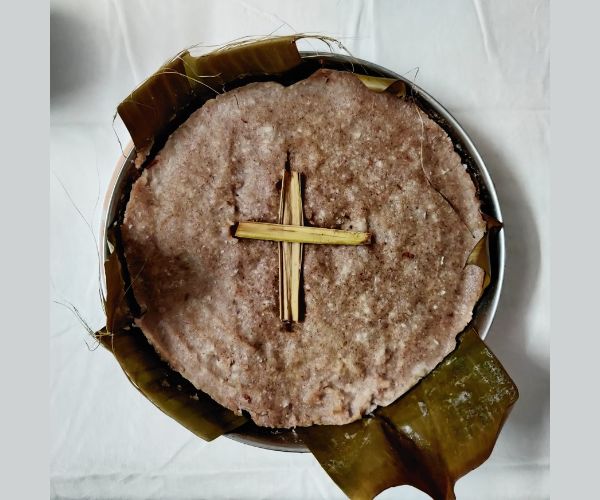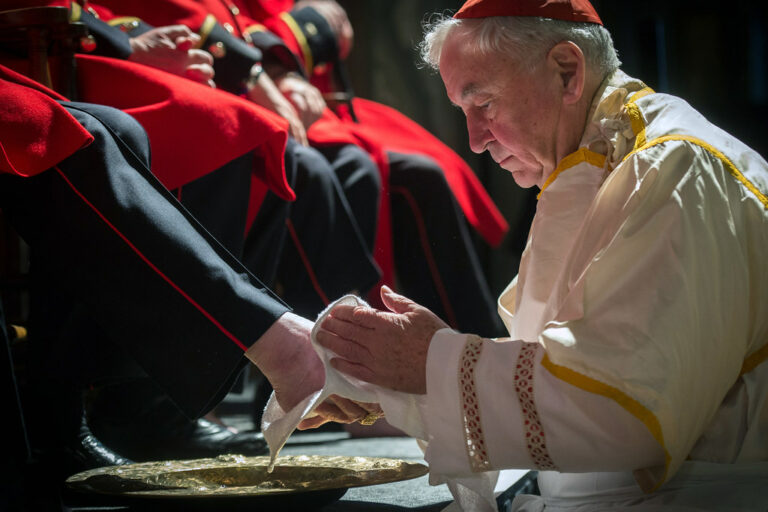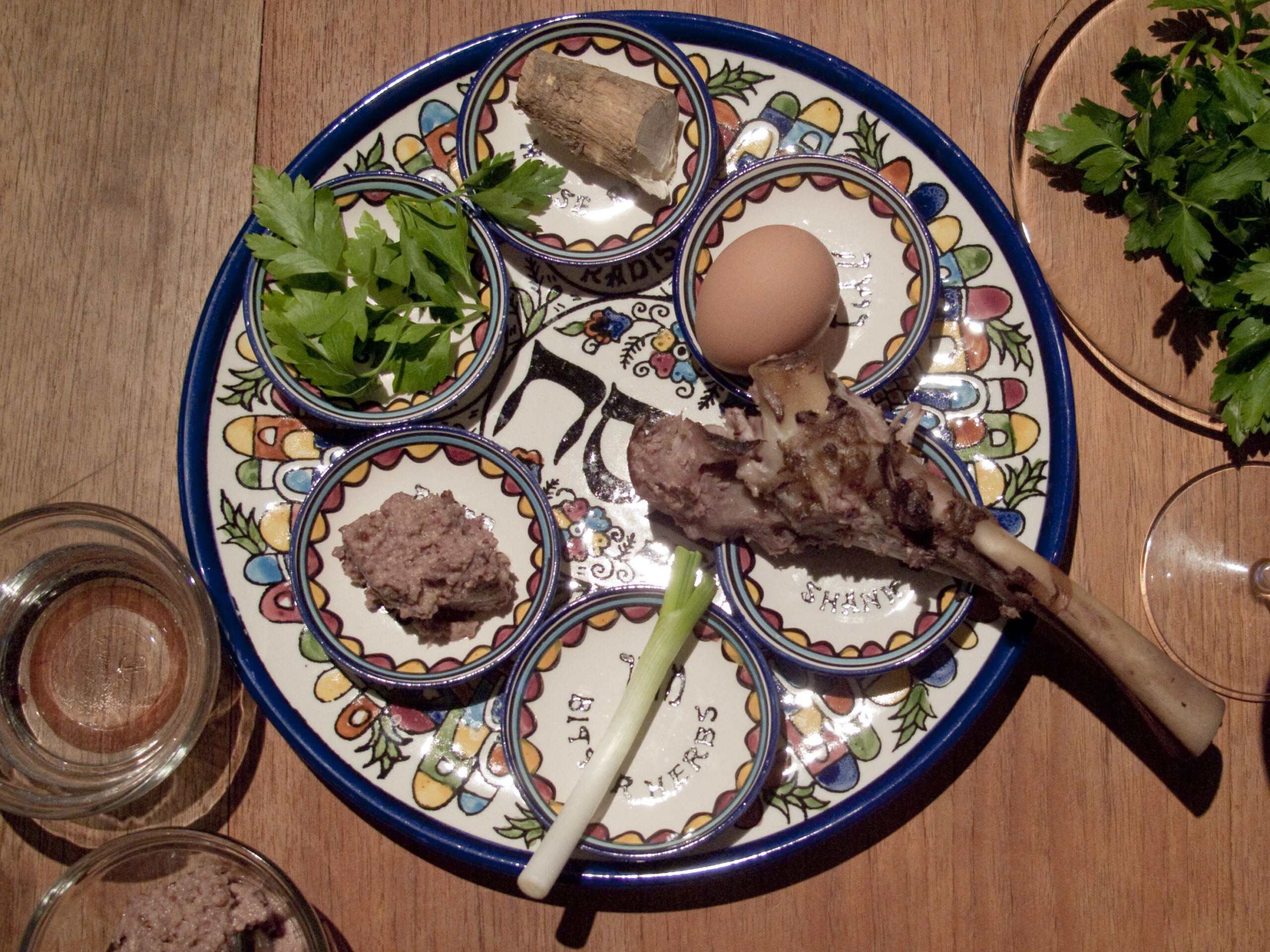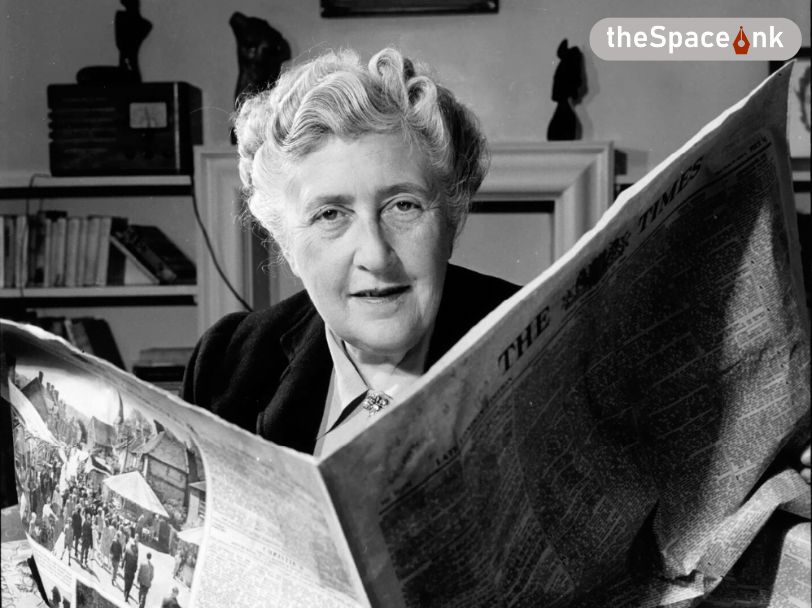While growing up in a Syrian Christian family in Kerala, I always looked forward to what our Syrian Christian tradition refers to as the Pesaha celebration on the night of Maundy Thursday. The Pesaha celebration which resembles the Jewish Seder night celebration during the Passover festival commemorates the last supper of Jesus during the Jewish Passover feast.
On the Pesaha night, the Maundy Thursday night, like every Syrian Christian family, our family would come together around our dining table in the middle of which is placed the Pesaha Appam (Pesaha bread), a special unleavened bread with the image of the cross made of palm leaves used during the Palm Sunday celebration, and Pesaha pal (Pesaha syrup). As per the tradition, my father, the head of our family, would read passages from the book of Exodus in the Bible, narrate the story of the Israelites Exodus from their 400 years of slavery in Egypt, sing devotional hymns and pray to invoke the blessing of God on every member of the family, break the Pesaha Appam and give morsels of it to everyone along with a cup of Pesaha pal. We would eat and drink them in reverential silence and end the ritual with a concluding prayer. In India, Pesaha celebration is observed only among the Syrian Christians who are called so because of their adherence to Syriac liturgical traditions and who claim their descent from St. Thomas the apostle.

However, Christians across the world celebrate Maundy Thursday (also called Holy Thursday) as part of the Holy week celebrations. The observance of the Holy Week comprises five days of special significance related to the sequence of events culminating in the death and resurrection of Jesus. Palm Sunday, Maundy Thursday, Good Friday, Holy Saturday (also called the Easter Vigil) and Easter Sunday constitute these five significant days.
Also read: Not in The Name of The Mother
Palm Sunday commemorates the triumphal entry of Jesus into the city of Jerusalem seated on a colt and accompanied and cheered by a large crowd that converged on Jerusalem to celebrate the Jewish Passover feast. On the following Wednesday, known popularly as Spy Wednesday or Good Wednesday, Judas Iscariot, one of the disciples of Jesus, is believed to have struck a clandestine deal with Jesus’ adversaries, the Jewish religious authorities, to hand him over to them stealthily. On the very next day, known as Maundy Thursday, a day of great significance for more than one reason, Jesus eats his last supper, his farewell meal, with his disciples after which he would be arrested by his Jewish foes. The very next day, known as Good Friday, Jesus is tried, convicted, and crucified to death. During the time between his death and resurrection, the time identified with the Holy Saturday, Jesus is believed to have descended into hell to rescue the souls of the righteous – an event referred to as the harrowing of hell. The following Sunday commemorates his resurrection. This article focuses only on the significance of Maundy Thursday.

With the commencement of the evening liturgical service on Maundy Thursday, the Christian community begins their observance of the Easter triduum, the solemn period commemorating what is known as the Paschal mystery— the passion, death, and resurrection of Jesus by means of which he is believed to have brought about the redemption of humankind. The triduum is carried on through Good Friday and Holy Saturday and is concluded on the eve of Easter Sunday.
On Maundy Thursday, the Catholic Church commemorates four important events— Jesus’ last supper with his disciples, his washing of the feet of his disciples introducing the commandment of love and service in action, his institution of the Christian Eucharist, and his institution of Christian priesthood.
Jesus’ last supper is his farewell meal with his disciples on the night of the Jewish Passover feast. This farewell meal incorporated into the Passover meal assumes great symbolic and spiritual significance that can be understood only in the background of the discourse on the Passover feast. The Passover feast commemorates the Israelites’ passing from their slavery in Egypt to their much-awaited freedom in the Promised Land. In other words, it commemorates the event of God liberating the Israelites from their Egyptian slavery at about 1400 BCE under the leadership of Moses.
Palm Sunday commemorates the triumphal entry of Jesus into the city of Jerusalem seated on a colt and accompanied and cheered by a large crowd that converged on Jerusalem to celebrate the Jewish Passover feast. On the following Wednesday, known popularly as Spy Wednesday or Good Wednesday, Judas Iscariot, one of the disciples of Jesus, is believed to have struck a clandestine deal with Jesus’ adversaries, the Jewish religious authorities, to hand him over to them stealthily.
The narrative in the book of Exodus 12: 26-37 in the Bible relates how Yahweh, the God of the Israelites, personally intervened in the history of his chosen race, the Israelites, in order to liberate them from their slavery in Egypt. Using Moses as His chosen human agent who would shoulder the mission of liberation, Yahweh inflicted ten plagues upon the Egyptians before the Pharaoh would release his Israelite slaves. The tenth and the worst of the plagues was the death of the firstborn (both human and animal) of the Egyptians. Yahweh instructed the Israelites to mark the doorsteps of their homes with the blood of a slaughtered spring lamb whose meat they would eat at a hasty ritual meal just before they would embark on their flight from their slavery to freedom. The retributive spirit of Yahweh that would descend on the land of Egypt on its fatal night would pass over every firstborn of the homes with doorsteps smeared with blood while it would strike every firstborn of all other homes to death. The Passover feast of the Israelites detailed in the book of Exodus commemorates the passing of the spirit of Yahweh over the homes of Israel and sparing the firstborn in their homes which ultimately culminates in the liberation of the Israelites.

Incidentally, the celebration of the feast of the Jewish Passover is an amalgamation of two ancient Semitic thanksgiving celebrations – Pesah, a pastoral festival, and Massoth, an agricultural festival. Almost all ancient pastoral nomadic Semitic communities used to sacrifice a yearling lamb, a firstling, in honour of their god, the creator and bestower of life, in an act of thanksgiving and supplication towards the end of winter. The pastoral nomadic Israelite communities did the same before they lead their sheep and cattle from the winter pastures to the summer pastures. They called this one-night thanksgiving celebration, Pesah, the Passover.
After the nomadic Israelites settled permanently in Canaan, the land that Yahweh is believed to have promised them, they began to change over from their pastoral mode of life to an agricultural mode of life. Along with this fundamental change, they also modified their celebration of Pesah. During their pastoral nomadic stage of life, if they sacrificed a lamb in honour of their god together as a community, during their agricultural stage of life, every household began sacrificing a lamb each in honour of their god. They called the sacrificial ritual, the paschal sacrifice and the sacrificial lamb, the paschal lamb.

The Canaanites, the original inhabitants of Canaan, used to celebrate their annual seven-day-long agricultural festival, Massoth, just before the commencement of the harvest season. During the festival, they offered Massoth, the unleavened bread, to their god in an act of thanksgiving and supplication, and they ate it themselves. Eating Massoth was a special ritual at this festival. As the Israelites made Canaan their homeland, they borrowed the festival of Massoth and made it their own.
With the passage of time, the Israelites integrated the festivals of Massoth into the festival of Pesah. Hence the book of Exodus (written several centuries after the exodus event) gives detailed instructions as to how the Israelites should slaughter a lamb, smear its blood on the doorsteps of their houses and eat its flesh on the night of their deliverance from Egypt. They are to “eat the flesh roasted at the fire with unleavened bread and bitter herbs” (Exodus 12: 8). They are further instructed to remember their day of deliverance and “celebrate it in honour of Yahweh. It is to be kept as a festival day for all generations forever” (Exodus 12:14).
Maundy Thursday commemorates the event of Jesus washing the feet of his disciples (a service ascribed to the servants in the house) and giving them the commandment of love. Before Jesus begins his last supper with his disciples at their Passover festive meal together, Jesus washes the feet of his disciples, and then, goes on to give them a discourse on his new command of love, the highlight of which is, “a new command I give you: Love one another as I have loved you” (John 13:34). This new commandment of love that Jesus imparts to his disciples is best exemplified in his act of washing the feet of his disciples. He teaches them how to practice love translated into humble service, the hallmark of authentic human life. The ritual washing of the feet of his disciple is also demonstrative of his declaration that he “came to the world not to be served but to serve.” (Mk 10:45).

The English word, ‘Maundy,’ meaning commandment, was born out of two words – the Latin word, ‘Mandatum,’ meaning ‘commandment,’ and the French word, ‘Mande,’ meaning, ‘something commanded.’ Therefore, the term, ‘Maundy Thursday’, comes to mean, Commandment Thursday. Maundy Thursday draws its significance from the Latin version of Jesus’ mandate, Mandatum novum do vobis (John 31:43), which means, ‘a new commandment I give unto you,’ and his further mandate ‘love one another as I have loved you.’ Because of the new mandate or commandment of love that Jesus imparted to his disciples on this Thursday over two thousand years ago, this Thursday got its name ‘Maundy Thursday,’ meaning, Mandate Thursday, or Commandment Thursday.
During his last supper, Jesus transforms his last Passover meal (which is also his last supper) into the prototype of the present-day Christian Eucharistic celebration. During the supper, he offers his body and blood to his Father in heaven under the appearance of bread and wine and then gives them to his disciples to eat and drink in place of the traditional Paschal meal prepared out of the meat of the paschal lamb, herbs, and grape wine. At this all-important meal, symbolically, Jesus assumes the role of a priest who sacrifices the paschal lamb while he also assumes the role of the sacrificial lamb. Hence, the daily Eucharist in the Christian tradition is understood as the sign of God’s perpetual presence in the world as Heavenly nourishment for people.

The institution of the Eucharist is structured into the last part of Seder, a traditional Jewish feast celebrated after midnight on the first night of the Passover festival. Seder is designed as a ritualistic re-telling of the story of the Exodus by the oldest man in the family in answer to the questions raised by a child in the family while eating Matzah (a Jewish unleavened bread), vegetables dipped in saltwater, bitter herbs and drinking of wine as mentioned in The Haggadah (The Passover Guide).
‘Hallel’ (a Jewish prayer, a verbatim recitation from Psalms 113–118) is part of the Seder. The Passover meal begins with the singing of the first part of the ‘Hallel,’ namely, Psalms 113 and 114, followed by the first cup of wine. After drinking the wine, the faithful eat bitter herbs, sing the second part of the ‘Hallel,’ namely, Psalms (Ps 115-116), drink the second cup of wine and listen to the oldest man in the family explain the significance of the event in answer to the question raised by a child in the family. This is followed by the eating of the roasted meat of the paschal lamb as well as Massoth, the drinking of the third cup of wine and the recitation of the last part of Hallel, namely, Psalms 117-118.
The English word, ‘Maundy,’ meaning commandment, was born out of two words – the Latin word, ‘Mandatum,’ meaning ‘commandment,’ and the French word, ‘Mande,’ meaning, ‘something commanded.’ Therefore, the term, ‘Maundy Thursday’, comes to mean, Commandment Thursday. Maundy Thursday draws its significance from the Latin version of Jesus’ mandate, Mandatum novum do vobis (John 31:43), which means, ‘a new commandment I give unto you,’ and his further mandate ‘love one another as I have loved you.’
At his last supper, in a striking parallel to the custom of the ritualistic eating of the roasted meat of the paschal lamb and drinking the third cup of wine, instead of offering his disciples the roasted meat of the lamb and wine, Jesus offers himself, his own body as food and his own blood as drink under the appearance of bread and wine. The institution of the Eucharist, the source and summit of the Christian life, is followed by the institution of the ministerial priesthood through his command, “do this in remembrance of me.” In doing so, Jesus symbolically incorporates his disciples and their successors into the priesthood and commands them to offer themselves in turn.
Maundy Thursday is a day of complex religious significance. However, the overarching spirit that lies at the heart of the day is unconditional love that should manifest itself in humble selfless service culminating in self-sacrifice so that others may have life and happiness in abundance. Embodying the spirit of this blessed day is a magnificent way of being a Christian, and more importantly, being human.
Images courtesy: Wikimedia Commons
Sacaria Joseph is an Assistant Professor in the Department of English at St. Xavier’s College, Kolkata. Having pursued his undergraduate studies at St. Xavier’s College, he furthered his academic journey by obtaining a Master of Arts degree in English Literature from Pune University, a Master of Philosophy from Jadavpur University, Kolkata, and a PhD from Visva-Bharati University, West Bengal. In addition to his academic pursuits, he writes on a wide array of subjects encompassing literature, philosophy, religion, culture, cinema, politics, and the environment.









2 Responses
Thankyou Rev Fr Scaria Joseph for providing us with a very meaningful and indepth article about Maunday Thursday .For providing us insights into certain words and rituals not known to us earlier .
Thank you Fr. Saju for sharing this beautiful article which explains the importance of the Holy Week.